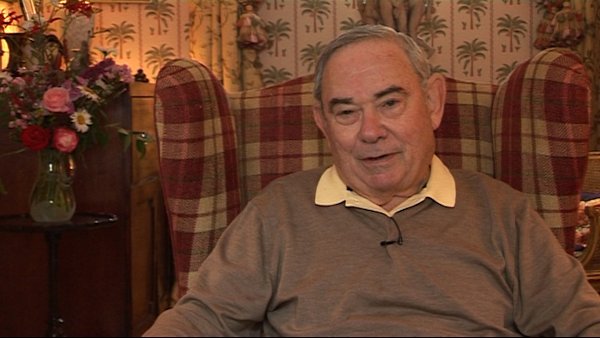NEXT STORY

'The golden era of virology'
RELATED STORIES

NEXT STORY

'The golden era of virology'
RELATED STORIES


|
Views | Duration | |
|---|---|---|---|
| 41. The world's first live virus vaccine | 94 | 00:35 | |
| 42. Jonas Salk | 104 | 00:43 | |
| 43. Creating sterile rooms | 58 | 01:43 | |
| 44. 'The golden era of virology' | 63 | 02:43 | |
| 45. The early days of cytogenetics | 59 | 02:04 | |
| 46. Working with cancer-causing viruses | 77 | 02:05 | |
| 47. Studies of normal human tissue | 87 | 01:18 | |
| 48. The immortality of cancer cells | 131 | 01:55 | |
| 49. Can cells live forever? | 148 | 01:15 | |
| 50. How to isolate your own cells | 88 | 02:28 |


The move then was made to the permanent lab, I had very good facilities. We had then – what we don't have now – we had what were called, are called, sterile rooms. They were very small rooms outfitted with work surfaces and ultraviolet lamps. These small rooms lined both sides of my rather large lab, and it was in these rooms that you did your sterile work with cell culture, of course the... one of the main problems with culturing human and animal cells in bottles and flasks is to keep out microorganisms, because if they fall in the soup in which the cells are growing, they will grow better than the cells and foul up any experiment you are doing by contaminating the cells. So the purpose of these small rooms was to achieve that goal of maximum sterility.
We did not have what we now have today, which are filters of such small diameter holes that they can filter out bacteria, they're called 'Hepa Filters', they did not exist. We relied substantially on ultra violet lamps, which of course kill whatever is on a surface but not what's not under a thin surface. And those lights were turned on every night in these small sterile rooms, turned off the next morning, and people worked in these... I think I had five or six of these small workrooms.
Leonard Hayflick (b. 1928), the recipient of several research prizes and awards, including the 1991 Sandoz Prize for Gerontological Research, is known for his research in cell biology, virus vaccine development, and mycoplasmology. He also has studied the ageing process for more than thirty years. Hayflick is known for discovering that human cells divide for a limited number of times in vitro (refuting the contention by Alexis Carrel that normal body cells are immortal), which is known as the Hayflick limit, as well as developing the first normal human diploid cell strains for studies on human ageing and for research use throughout the world. He also made the first oral polio vaccine produced in a continuously propogated cell strain - work which contributed to significant virus vaccine development.
Title: Creating sterile rooms
Listeners: Christopher Sykes
Christopher Sykes is a London-based television producer and director who has made a number of documentary films for BBC TV, Channel 4 and PBS.
Tags: sterile rooms, laboratory, ultraviolet lamp, cell culture, contamination, sterility, hepafilter
Duration: 1 minute, 43 seconds
Date story recorded: July 2011
Date story went live: 08 August 2012